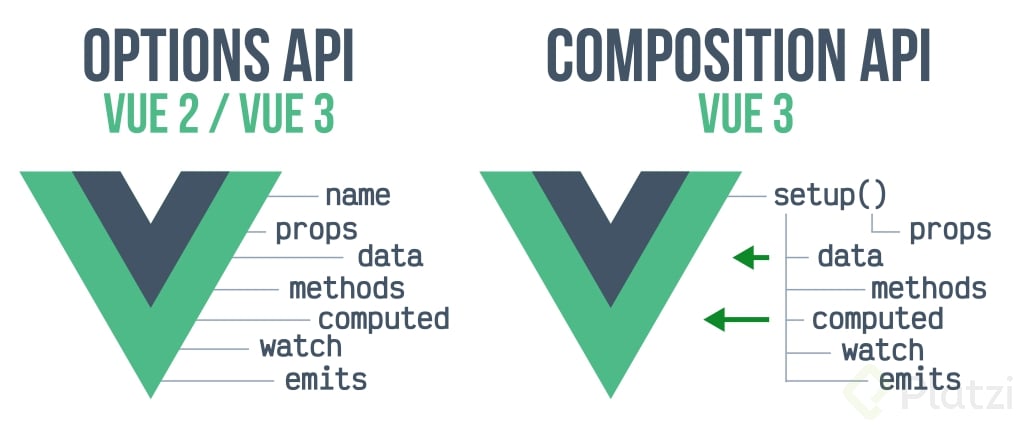Composition API vs. Options API in Vue.js

What is the Composition API?
The Composition API is a new way of writing Vue.js components that was introduced in Vue.js 3. It allows you to create components by composing functions together. This makes it easier to create reusable and maintainable components.
- The ability to use hooks: Hooks are functions that can be used to add functionality to components.
- The ability to use slots: Slots are placeholders in a component's template that can be filled with other content.
- The ability to use refs: Refs are variables that can be used to store data that is reactive to changes.
What is the Options API?
The Options API is the original way of writing Vue.js components. It is based on a set of options that you can use to define the behavior of a component.
- The ability to use mixins: Mixins are objects that can be used to add functionality to components.
- The ability to use directives: Directives are special attributes that can be used to add functionality to elements in a component's template.
- The ability to use lifecycle hooks: Lifecycle hooks are functions that are called at different points in the lifecycle of a component.
Should you learn the Composition API?
The Composition API is a powerful new way to write Vue.js components. It is worth learning if you are starting a new project or if you are looking for a more flexible and maintainable way to write components.
However, the Options API is still a viable option for many projects. If you are already familiar with the Options API and you are not looking for the features of the Composition API, there is no need to learn it.
Conclusion
The Composition API and the Options API are both powerful tools for writing Vue.js components. The best API for you will depend on your specific needs and preferences.
If you are starting a new project or if you are looking for a more flexible and maintainable way to write components, the Composition API is a good choice. However, if you are already familiar with the Options API and you are not looking for the features of the Composition API, there is no need to learn it.


Post a Comment
0Comments